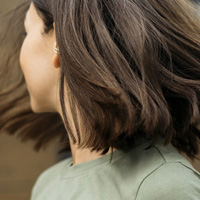BACKGROUND
Ingredient Type: Botanical
Also Known As: Inula racemosa, Pushkarmool, Indian elecampane
Pushkaramula is an herb that grows in high mountain areas and is used in Ayurvedic medicine. It is in the daisy family and native to the temperate and alpine western Himalayas (5,000-14,000 ft altitude) of Xinjiang, Afghanistan, Kashmir, Nepal, Pakistan. The roots are widely used in indigenous medicine as an expectorant (3,4,5).
Some of the major chemical constituents of pushkaramula root are: Alantolactone, Isoalantolactone, Inunolide-Germacranolide, Dihdroisoalantotolactone, B-Sitosterol, D-Mannitol, Dihydroinunolide, neo-Alantolactone, inunolise, Sesqiterpene lactone-inunol, and Alantodiene (8).
TRADITIONAL USES
Pushkaramula has been used to treat cardiovascular and respiratory problems as well as for weight loss. Other conditions treated traditionally with pushkaramula include: bacterial infections, blood sugar metabolism problems, asthma, bronchitis, cough, and heart disease. Literature suggests it works by protecting antioxidants in the body and increasing their function. (6,7)
Although not as common, it has also been used for fever, anorexia, cough and cold, wound treatments, bloating, COPD, hiccups, anemia, liver disorders; and as an aphrodisiac and uterine stimulant, anti-viral and anti-bacteral, and beta blocker for hypertension (9).
WHAT DOES SCIENCE TELL US?
Cardiovascular effects: Inula racemosa prevented ST-segment depression and T-wave inversion (1) and had a beneficial effect on angina pectoris (2) in patients with ischemic heart disease. Inula racemosa extract exhibited negative inotropic and chronotropic effects on a frog heart (1) and prevented experimentally-induced myocardial infarction in a rat model (3,7).
Glucose-modulating effects: Inula racemosa extract lowered plasma insulin and glucose and counteracted adrenaline-induced hyperglycemia in animal models (1).
Anti-Allergen properties: The inhibitory effect of pushkaramula extract was significant in immunologically induced degranulation (e.g. histamine release) of mast cells (10).
Anti-bacterial activity: The structure of isolated pushkaramula constituents were confirmed by spectral analysis and were used for the determination of the antibacterial activity against various microorganisms (11).
SAFETY
People with high BP should only take this herb under medical supervision. Over-dosage may hypothetically cause hypotension (9).
REFERENCES
- Tripathi, Y. B., Tripathi, P., and Upadhyay, B. N. Assessment of the adrenergic beta-blocking activity of Inula racemosa. J Ethnopharmacol. 1988;23(1):3-9. (1)
- Tripathi, S. N., Upadhyaya, B. N., and Gupta, V. K. Beneficial effect of Inula racemosa (pushkarmoola) in angina pectoris: a preliminary report. Indian J Physiol Pharmacol. 1984;28(1):73-75
- Patel, V., Banu, N., Ojha, J. K., Malhotra, O. P., and Udupa, K. N. Effect of indigenous drug (Pushkarmula) on experimentally induced myocardial infarction in rats. Act.Nerv.Super.(Praha) 1982;Suppl 3(Pt 2):387-394
- Hooker, Joseph Dalton, 1881, Flora of British India 3(8): 292
- Thomas, G.S (1990) Perennial Garden Plants. London: J.M. Dent & Sons. ISBN 0-460-86048-8
- Mangathayaru K, Kuruvilla S, Balakrishna K, Venkhatesh J. Modulatory effect of Inularacemosa Hook. f. on experimental atherosclerosis in guinea-pigs. J Pharm Pharmacol. 2009. 61(8). 1111-1118.
- Miller, Alan L. Botanical influences on cardiovascular disease. Alternative Medicine Review. 1998. 3(6). 422-431
- Illustrated Dravyaguna Vljnana, Vol. II, by Dr. HLN Shastry
- https://easyayurveda.com/2013/09/18/pushkarmool-inula-racemosa-benefits-usage-dose-side-effects/
- http://ijrrpas.com/wp-content/uploads/2012/08/Mast-Cell-Stabilizing-Activity-of-Inula-Racemosa-Linn.pdf
- https://scialert.net/abstract/?doi=rjmp.2007.7.12









